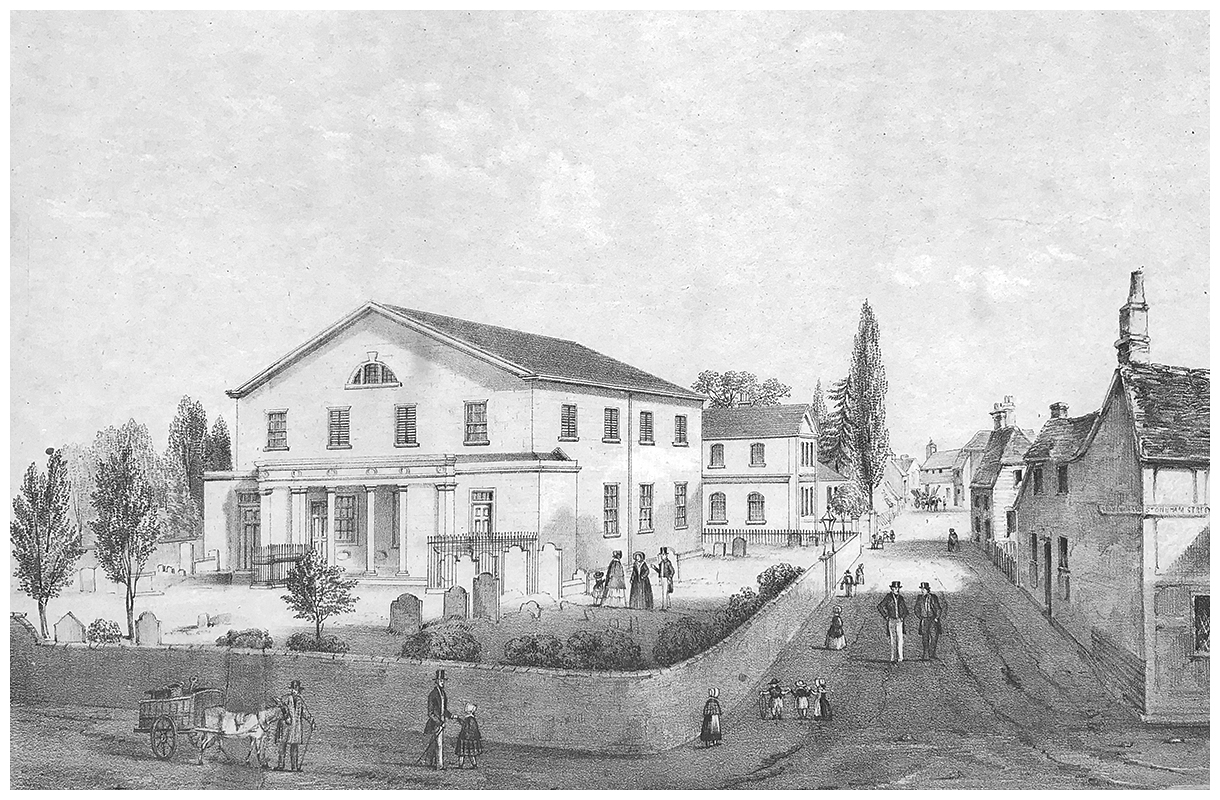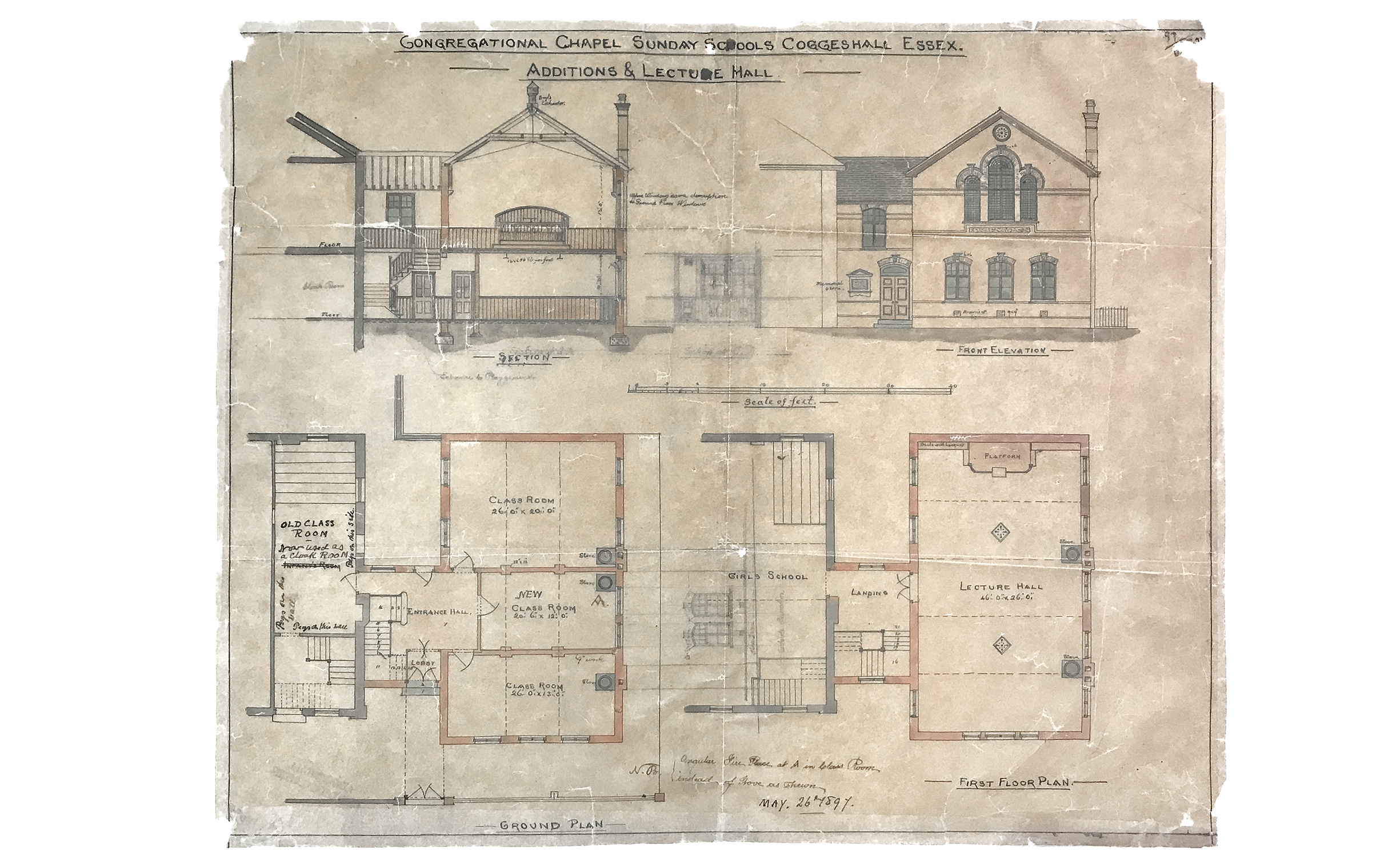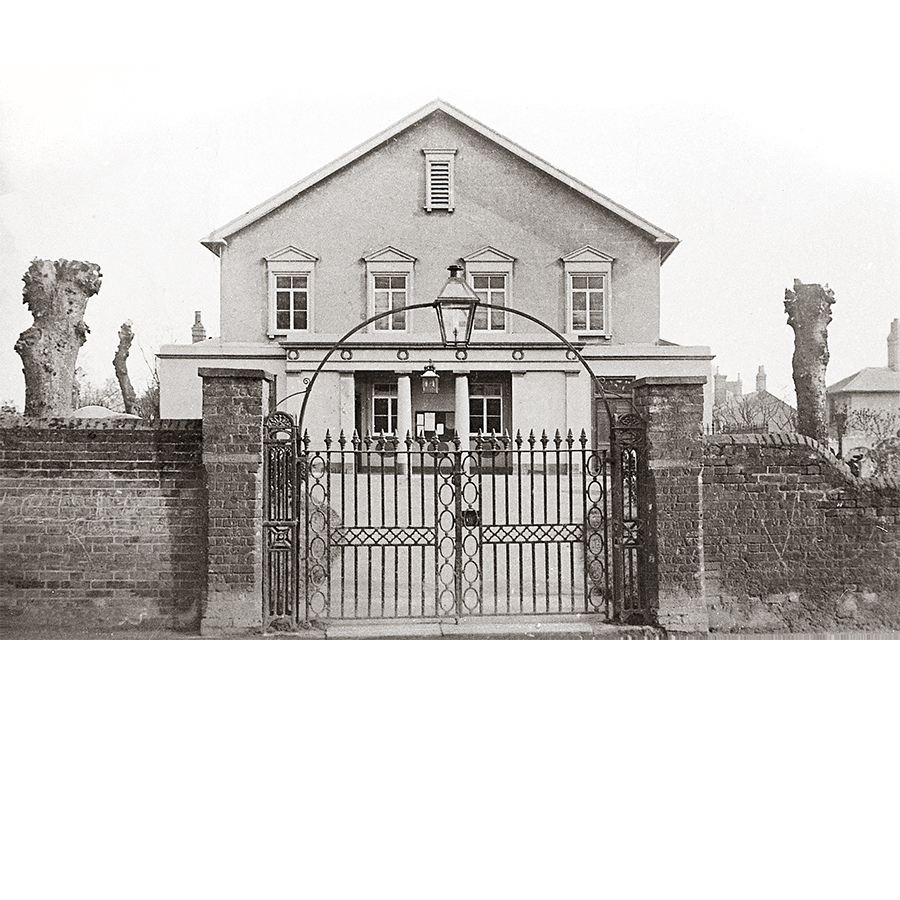THE INDEPENDENT or CONGREGATIONAL CHAPEL & SCHOOLS

THE INDEPENDENT or CONGREGATIONAL CHAPEL later
THE UNITED REFORMED CHURCH and now called CHRIST CHURCH
The Coggeshall Congregational Chapel has its origins in a remarkable vicar of Coggeshall, the Rev John Owen, who came here in 1646. He was one of the formost religious thinkers in the country and formed a society here to talk about matters of religion which were very much a hot topic at the time. A central tenet was that the local congregation had authority on matters of religion – ‘when two or three are gathered together in my name’. The group gathered in the church for almost sixteen years.
When Owen left Coggeshall (he was a favorite of Oliver Cromwell) the group continued within St Peter’s church but the Act of Conformity of August 1662 caused a split. The then vicar, the Rev John Sames, was not able to assent as required to the the entirety of the Book of Common Prayer so had to resign. Across the country the various groups who could not assent to the act became the ‘non-conformists’. Coggeshall was a notable centre for non-conformisty including the Baptists, the Wesleyan Methodists and the Quakers and was described in a report of 1669 for the Archbishop of Canterbury as ‘Coggeshall. Hard to be supressed’.
When Sames left the established church so did the members of the ‘Congregational fellowship’ established by Owen, so 1662 is regarded as foundation date for the Coggeshall Congregational Church.
The group led by Sames met at first in a private house and then, for lack of space, in a converted barn on the north side of East Street. In 1710 they moved to the present site in Stoneham Street where Thomas Crosby of Bocking built a meeting house for them. It was 45 x 36 feet with galleries and a vestry. It was registered as ‘a meeting house for religious worship of Protestant dissenters from the Church of England commonly called Independents 31st August 1710’.
In 1794, another piece of land was purchased between the Meeting House and Church Lane (now Queen Street). In 1834 the church was considerably enlarged at a cost of about £1,000 and in 1865 an extension provided an apse around the east end behind the pulpit to accommodate the organ and choir.
Bryan Dale, M A, author of “The Annals of Coggeshall”, was minister here from 1855 until 1863 and as well as the history of Coggeshall his book details Coggeshall’s religious history, especially that of the Independent church.

In 1882, the whole of the interior was entirely reconstructed:
The chapel had fallen into a dilapidated condition and the Rev A, D. Philps, made a successful appeal for subscriptions. Mr Chas. Pertwee, architect, of Chelmsford prepared plans, and the tender of Messrs. Gardner & Son, Church Street, for carrying on the work was accepted at an estimated cost of £1,350. The chapel was new floored and benched with pitch pine seats; new galleries constructed in accordance with the extension made in 1864 ; casement windows, glazed with tinted chequered glass, to replace the former ones; and the ceiling has been panelled out with moulded ribs, the filling in being a grey ground relieved with small buff stars: the walls are distempered and relieved with stencilling. A very spacious and ornamental one, new platform or pulpit in pitch pine was designed and made by Mr W. B. Polley, of Church Street and was purchased by a subscriptions collected by the Pastor’s children. The other improvementswere the ornamentation of the ceiling, the panelling and painting, in light blue, of the walls, and the substitution of gas pendants for gas standards. (Coggeshall Almanac 1884)
More renovations took place in 1899 at a cost of £250 and the organ was enlarged and reconstructed in 1902 costing £350.
The British Schools
The Congregationalists had given financial support to a small school since 1788 and in 1811 this was expanded into the ‘British Schools’ which was to provide education for children of all denominations (unlike the National School on Stoneham Street which was a Church of England school). Originally there had only been a Sunday School which was attended by hundreds of children but this soon expanded to include a day school. In 1841 new school rooms were built on a piece of land along Queen Street. This was enlarged in October 1856 to accomodate the increased number of children who were attending the schools. The extension comprised ‘an upper room 44 feet x 40 feet a lower room about the same size and class rooms’ (according to the Chelmsford Chronicle 17 October 1856) and cost £350. In 1862 the Boys Day School had 80 children, the Infants School 110 and the Sunday School 600. From these figures (given by the Rev Dale) it is apparent that girls were not educated here at this time but from 1870 they certainly were.
The school was maintained by donations from individuals and small payments by the pupils but the requirements of the Forster Education Act of 1870 made running the school much more expensive and it looked for a while as if it might close. However funding was found and in 1879 the school was enlarged again with a new building added to the east which had three new classrooms on the ground floor and a lecture hall above. Corridors provided a link to the old remodeled building. The lecture hall soon became the regular venue for parish meetings and entertainments. (see plan below from the museum archive)

The British Schools remained in use until 1915 when the pupils moved to the new Council School on what is now Myneer Park. The Robert Hitcham School also ceased at this date.
Rooms in the building continued to be used for meetings and an exhibition, part of the Llamas Fair, called ‘The Face of Childhood’ was held there in the 1960s.
Some of the school log books and the punishment book can be seen in the museum and other documents are held in the archive.

The school buildings have been converted into apartments, bearing the name of Bryan Dale. the minister from 1855 to 1863.
The graveyard contains some interesting monuments, although some have now been moved against the boundary wall. Until recently there were two magnificent old Judas trees (cercis siliquastrum) which looked wonderful in full flower. Unfortunately these needed very drastic pruning leaving just a stump behind but they are now producing new growth.
Part of the rear of the church was used for many years by Miss Kemp’s Play Group which I am sure many will remember. The church is regularly used as a venue for meetings and lectures.
In 1989 the Congregational community came together with the Baptists and Wesleyan Methodists to form Christ Church.